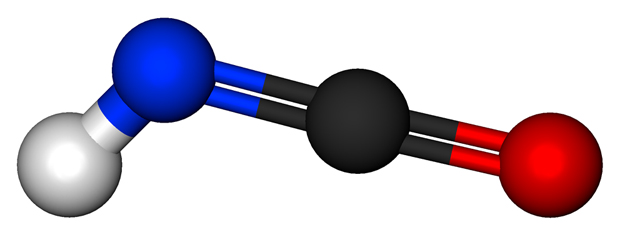Isocyanic Acid (HNCO) In The Hot Molecular Core G331.512-0.103: Observations and Chemical Modelling

Isocyanic acid (HNCO) is a simple molecule with a potential to form prebiotic and complex organic species.
Using a spectral survey collected with the Atacama Pathfinder EXperiment (APEX), in this work we report the detection of 42 transitions of HNCO in the hot molecular core/outflow G331.512-0.103 (hereafter G331). The spectral lines were observed in the frequency interval ∼ 160 – 355 GHz. By means of Local Thermodynamic Equilibrium (LTE) analyses, applying the rotational diagram method, we studied the excitation conditions of HNCO. The excitation temperature and column density are estimated to be Tex = 58.8 ± 2.7 K and N = (3.7 ± 0.5) × 1015 cm−2, considering beam dilution effects.
The derived relative abundance is between (3.8 ± 0.5) ×10−9 and (1.4 ± 0.2) ×10−8. In comparison with other hot molecular cores, our column densities and abundances are in agreement. An update of the internal partition functions of the four CHNO isomers: HNCO; cyanic acid, HOCN; fulminic acid, HCNO; and isofulminic acid, HONC is provided.
We also used the astrochemical code Nautilus to model and discuss HNCO abundances. The simulations could reproduce the abundances with a simple zero-dimensional model at a temperature of 60 K and for a chemical age of ∼ 105 years, which is larger than the estimated dynamical age for G331. This result could suggest the need for a more robust model and even the revision of chemical reactions associated with HNCO.
Carla M. Canelo, Leonardo Bronfman, Edgar Mendoza, Nicolas Duronea, Manuel Merello, Miguel Carvajal, Amâncio C.S. Friaça, Jacques Lepine
Comments: 17 pages, 8 figures , Accepted in MNRAS
Subjects: Astrophysics of Galaxies (astro-ph.GA)
DOI: 10.1093/mnras/stab1163
Cite as: arXiv:2104.10605 [astro-ph.GA] (or arXiv:2104.10605v1 [astro-ph.GA] for this version)
Submission history
From: Carla Martinez Canelo
[v1] Wed, 21 Apr 2021 16:02:55 UTC (312 KB)
https://arxiv.org/abs/2104.10605
Astrochemistry, Astrobiology.








